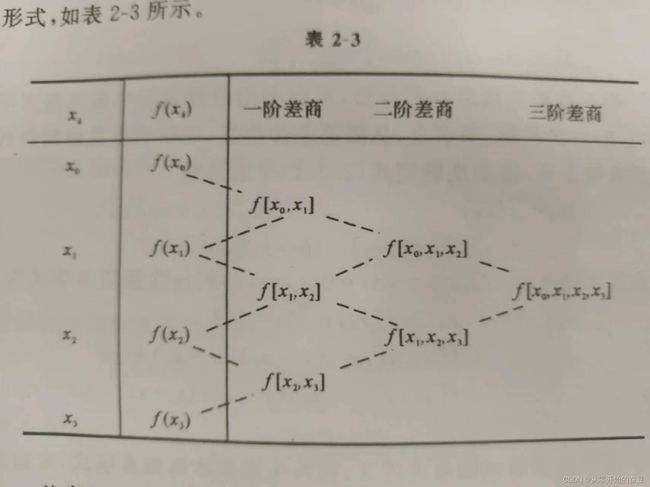matlab实践(六):拉格朗日插值法和Newton插值法
1.拉格朗日插值法
1.1过程
Step1:根据已有给定的 ![]() 个取值点,求每个取值点对应的拉格朗日基本多项式
个取值点,求每个取值点对应的拉格朗日基本多项式 ![]() ,表示为:
,表示为:
![]()
Step2:根据已知的 ![]() 个取值点,使用第一步中求出的每个取值点对应的拉格朗日基本多项式
个取值点,使用第一步中求出的每个取值点对应的拉格朗日基本多项式![]() ,然后求已知
,然后求已知 ![]() 个点对应的拉格朗日插值多项式
个点对应的拉格朗日插值多项式 ![]() 。其表达式为:
。其表达式为:
![]()
Step3:和原来函数对比
1.2代码实现
1.2.1计算
function [f,g]=m1(A,x,X)
[n,~]=size(A);
f=1;
g=1;
for i=1:n
if(A(i,:)~=x)
f=f*(x(1)-A(i,1));
g=g.*(X-A(i,1));
end
end
end
1.2.2拟合
clc;clear;
l=1:1:10;
m=l.^2;
A=[l',m'];
[n,~]=size(A);
x=1:0.5:10;
y=0;
for i=1:n
[f,g]=m1(A,A(i,:),x);
y=y+A(i,2).*g./f;
end
plot(A(:,1),A(:,2),'k.','Markersize',20);
hold on
plot(x,y,'bo-');
legend('原始函数','拉格朗日拟合');
1.3结果
2.Newton插值法
2.1过程
Step1:通过给定插值点的信息,计算 ![]() 各阶差商
各阶差商
Step2: 代入化简,可得牛顿插值公式为:
2.2代码实现
2.2.1计算各阶差商
function [b1,f1]=n1(A,m)
[n,~]=size(A);
a=A;
a1=a;
for j=1:m
for i=1:n-1
b{j}(i)=a(i+1,2)-a(i,2);
f{j}(i)=(a1(i+1,2)-a1(i,2))/(a1(i+j,1)-a1(i,1));
end
a(1:n-1,2)=b{j}';
a1(1:n-1,2)=f{j}';
n=n-1;
end
b1=b{m}(1);
f1=f{m}(1);
end2.2.2拟合
clc;clear;
% a=randi(10,10,2);
% [B,index]=sort(a(:,1));
% A=[B,a(index,2)];
l=1:1:10;
m=l.^2;
A=[l',m'];
[n,~]=size(A);
x=1:0.5:10;
y1=A(1,2);
y2=A(1,2);
t=0.2;
h=1;
for i=1:2
[~,f]=n1(A,i);
h=h.*(x-A(i,1));
% y1=y1+b.*h;
y2=y2+f.*h;
end
plot(A(:,1),A(:,2),'k.');
% hold on
% plot(x,y1,'ro');
hold on
plot(x,y2,'bo');
legend('原始函数','Newton插值');


